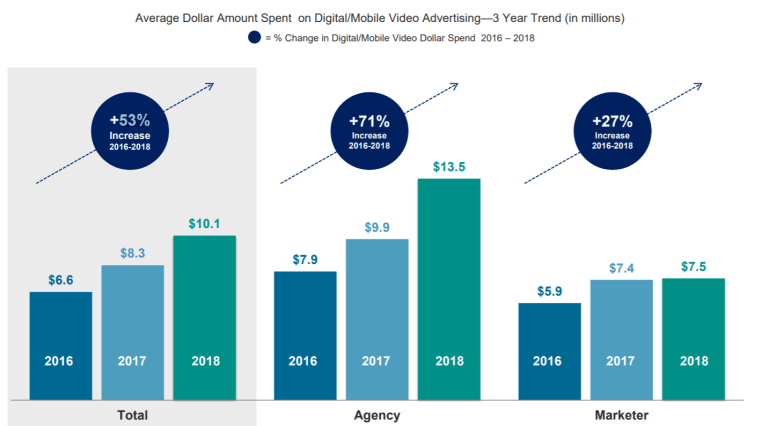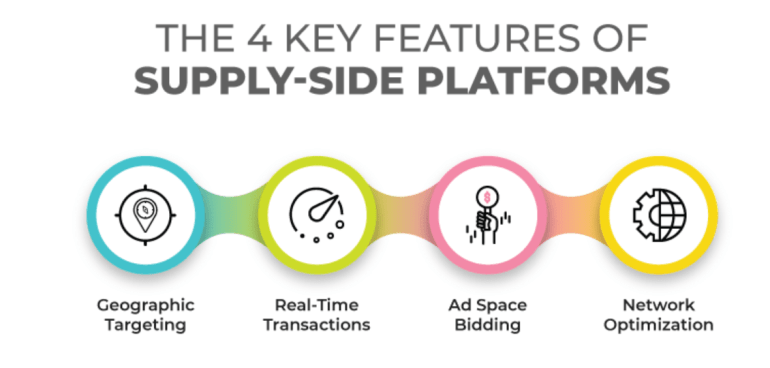Video SSPs have become pivotal in increasing publisher revenue by streamlining the methods and processes for selling video ads. Dedicated exclusively to a publisher’s inventory, video SSPs help them in customizing out-stream, mobile, display, and native ads through a single platform.
Video advertising is gradually becoming one of the most embraced digital advertising trends for the positive results it has brought to both publishers and advertisers.
According to Statista, ad spending in video advertising is expected to grow at a rate of 4.3% by the end of 2023. Additionally, the IAB reported a 25% year-on-year increase in digital video spend by marketers in their Video Advertising Spend Report 2019.

With these statistics in place, it can be understood that the demand for video monetization is increasing.
Despite the compelling case video SSPs have made for themselves, choosing the right one can be confusing. With so many options available, a comprehensive list for understanding how to choose the right SSPs is important.
In this post, we help publishers in finding the best video monetization partner (in this case, an SSP).
What is a Video SSP?
Before we start talking about the metrics you should be looking at for finding the right SSP, it’s important to know what a video SSP is.
Just like any other supply-side platform, a video SSP serves the same purpose. To put it simply, an SSP helps publishers manage their inventory, fill it with the right ads, and help in earning revenue. Traditionally, publishers performed these tasks manually. But SSPs have automated these processes for them.

While video advertising seems like a lucrative opportunity for earning revenue, it comes with a set of technical complications. For instance, video ads are served in different formats, each of which require a feature to handle ad requests. The right video SSP should have tools and functionalities to fulfill these requirements and make ad serving seamless.
Some of the aspects that a publisher must consider before opting for a particular SSP are as follows:
Demand Partners
Although real-time bidding has opened up avenues for SSPs to easily connect with many DSPs, their performance and ability to build relationships can vary. Ideally, a publisher should seek out a video SSP that brings in demand from all the major demand-side platforms.
The right video SSP should make sure that your inventory is constantly discoverable. This can only be ensured if it connects to all the major DSPs.
Technical Requirements
Videos come in a lot of different formats and almost everyone has encountered the challenge of not being able to find the right video player for a particular video. The ad tech industry is no stranger to this complexity and often faces this as a technical problem.
With videos available in multiple formats and sizes, the necessity for integrated tools in video SSPs that can convert, sort out, and play has increased. This is an important metric for choosing the right video SSP.
Ideally, the right video SSP for you should possess tools that help in conversion and processing of video formats. These tools should also have some additional features such as reduction of latency, blocking of faulty creatives that can cause loss of revenue, and others.
Include Header Bidding
The right video SSP should have extended integration technologies like header bidding and header bidding wrapper.
By adding video header bidding to your SSP, publishers should see an increase in yield as header bidding is known to improve demand. Furthermore, for premium and large-scale publishers this method allows them to compete their video SSP with header demand, resulting in better bid pressure.
VPAID and VAST Support
While VPAID vs VAST (IAB’s standard video formats) floats around as a common question, your SSP should ideally support both formats. VAST is the more widely adopted technology (used by Google) out of both, but VPAID comes with its own set of benefits.
VPAID has been linked with providing better viewer analytics and having additional features which VAST lacks. However, the format is not adapted as well as its counterpart due to frequent VPAID errors and technical complications.
VAST on the other hand provides an easily accessible technology which has improved even further owing to the release of its newer versions.
Since both VPAID and VAST have their own set of advantages, a video SSP should have the ability to support both.
Support Multiple Platforms and Formats
Your video SSP should also have the ability to monetize your inventory across platforms of all types. These platforms include mobile, desktop, TV, applications, tablets, etc.
Additionally, the SSP should allow customizations for supporting the wide range of video ad formats including in-stream, out-stream, linear, pre-roll, mid-roll, post-roll, overlay, in-banner video ads, and others.
Enhanced Reporting
One of the primary reasons for the growth of video advertising is better user engagement. In the case of a video ad, the experience is more immersive as compared to banner ads. This happens because of the combination of visual and audio content.
With this knowledge, the necessity for tracking the amount of user engagement with the advertisements has increased. Publishers must choose a video SSP that provides them additional tracking metrics including click rates, errors, paid impressions, etc.
Conclusion
Finding the right video SSP for your website can be challenging. Keeping these metrics in mind, it wouldn’t take long to figure out the right SSP for your website. If you’re looking at SSP options available, you can browse the list of best SSPs here.

Shubham is a digital marketer with rich experience working in the advertisement technology industry. He has vast experience in the programmatic industry, driving business strategy and scaling functions including but not limited to growth and marketing, Operations, process optimization, and Sales.







